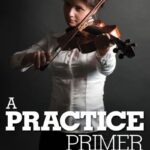Rolling your R’s, that quintessential Spanish sound, can feel like an insurmountable challenge. But don’t despair! With the right approach and consistent practice, anyone can master this skill. This comprehensive guide breaks down the science behind the trill and provides a step-by-step method to help you conquer the rolled R.
Understanding the Mechanics of the Rolled R
The rolled R, technically known as the alveolar trill, isn’t about tapping your tongue rapidly. It’s about controlling airflow. It involves creating a vibration at the tip of your tongue against the alveolar ridge, the bumpy area just behind your upper teeth. This vibration interrupts the airflow from your vocal cords, producing the characteristic “rrr” sound.
Debunking the Myth: Tongue Rolling Isn’t Genetic
Contrary to popular belief, the ability to roll your R’s isn’t determined by genetics. It’s a learned skill, just like riding a bike or playing an instrument. The difficulty arises from a lack of awareness of how our mouths work. With targeted exercises and a clear understanding of the mechanics, anyone can train their tongue to trill.
Why Mastering the Rolled R Matters
While you can sometimes get away with using a single tap (the single Spanish R), mastering the trill significantly enhances your Spanish pronunciation. It prevents confusion between words like “pero” (but) and “perro” (dog), and it helps you sound more natural and fluent.
A Step-by-Step Guide to Rolling Your R’s
This guide presents a three-lesson approach, each with targeted exercises, to gradually build your trilling skills:
Lesson 1: Building Tongue Awareness
This crucial first step involves exercises like the “peanut-butter scrape,” where you imagine cleaning peanut butter from the roof of your mouth with your tongue, and reciting the alphabet while focusing on tongue placement. These exercises enhance your awareness of your tongue’s movements and its interaction with different parts of your mouth.
Lesson 2: Mastering Tongue and Lip Vibrations
Start with the easier lip trill (the “brrr” sound) to understand the principles of vibration. Progress to the closed tongue trill, vibrating your tongue against the roof of your mouth. Finally, work on the alveolar trill, focusing the vibration at the tip of your tongue against the alveolar ridge. Experiment with airflow, tongue relaxation, and the size of the gap between your tongue and the ridge.
Lesson 3: Integrating the Trill into Words
Once you can produce a consistent trill, practice combining it with vowels and consonants. Start with simple syllables like “arra,” “erre,” “irri,” etc. Then, move on to words like “mar” (sea), “dar” (to give), and more complex words like “pintor” (painter).
Practice Makes Perfect: Tips for Success
- Consistency is Key: Practice daily, even if it’s just for a few minutes.
- Downloadable Exercises: Utilize downloadable PDF exercises for structured practice.
- Use a Pronunciation Trainer: Apps like SuperCoco provide feedback and comparison with native speakers.
- Be Patient: Learning a new skill takes time and effort. Don’t get discouraged if you don’t see results immediately.
Conclusion
Learning to roll your R’s is an achievable goal for anyone learning Spanish. By understanding the mechanics, following a structured approach, and practicing consistently, you can unlock this essential sound and significantly improve your pronunciation. So, embrace the challenge and enjoy the journey of mastering the Spanish trill!

